I would assume that a major reason someone buys a Nissan Rogue rather than a Honda CR-V, Subaru Forester or Toyota RAV4 is because of its looks. The new Rogue, like its predecessor actually, is quite the handsome thing. It's nicely proportioned with a face that's distinctively bold without being overwrought. It doesn't scream "functionality!" like the rather mumsy CR-V or the sensible-shoes Forester.
Usually, such an emphasis on style would result in a reduction of space and versatility. Fashion and function are often at odds with each other. Yet, the Rogue bucks that trend. Though it's not quite as spacious or versatile as its fellow top sellers, it's still awfully big for something deemed a "compact" SUV. There's abundant leg- and headroom in the back seat, and since this is a luggage test, a surprising amount of cargo space. In fact, its 74.1 cubic-feet of maximum cargo capacity trails only the CR-V for class best. Space behind the raised back seat isn't as good as the CR-V and RAV4, however, with Nissan measuring it at 31.6 cubic-feet in the cargo area's standard formation (like the vehicle we'll be testing here) and 36.5 cubic-feet with the innovative optional Divide-N-Hide cargo floor. Let's see if that 31.6 cubic-feet is consistent with the amount of luggage you can actually cram aboard.
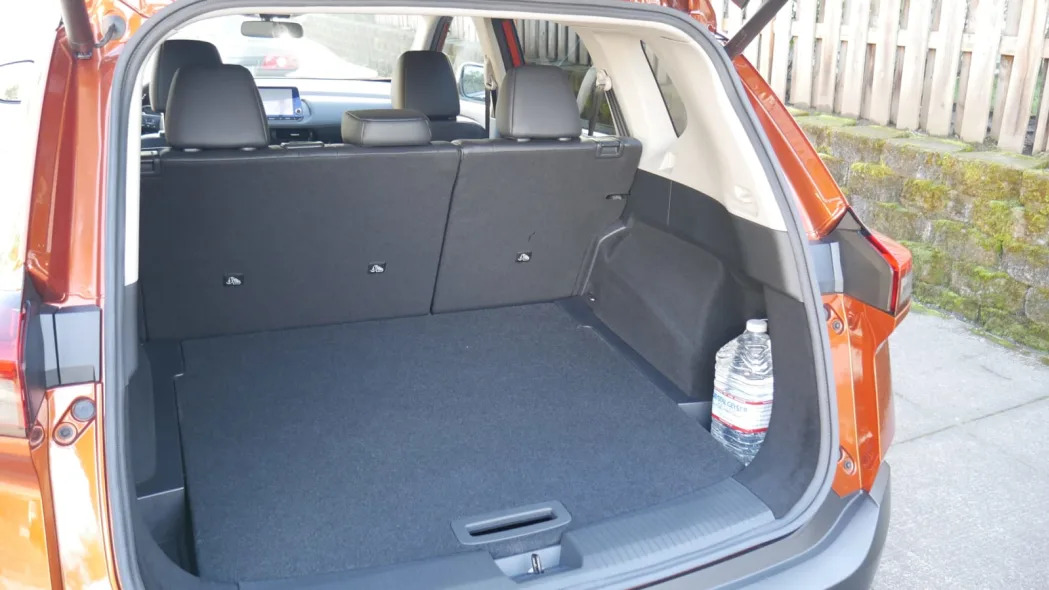
Here is the space you're dealing with. The test car did not come with a cargo cover, so I couldn't test with and without it.
As with every luggage test, I use two midsize roller suitcases that would need to be checked in at the airport (26 inches long, 16 wide, 11 deep), two roll-aboard suitcases that just barely fit in the overhead (24L x 15W x 10D), and one smaller roll-aboard that fits easily (23L x 15W x 10D). I also include my wife's fancy overnight bag just to spruce things up a bit (21L x 12W x 12D).
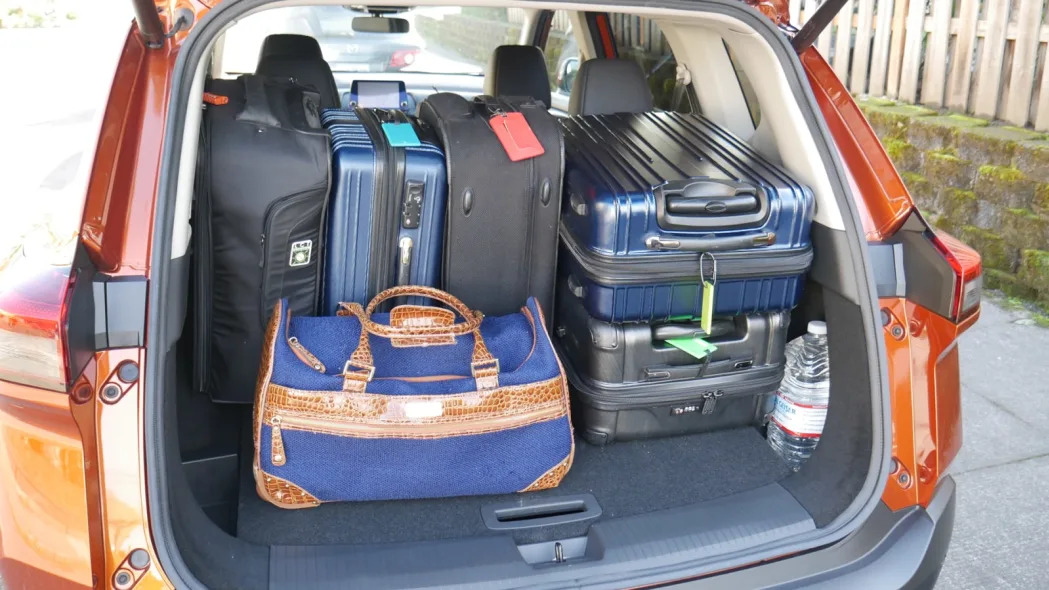
Everything fits! Also, rear visibility is maintained despite keeping the medium rollers upright. There's also clearly enough room for something more ...

... Which will be a Graco Pack 'N Play playpen. This is better than most compact crossovers, though as the numbers suggest, not quite as good as the RAV4 or CR-V. You can see those below.

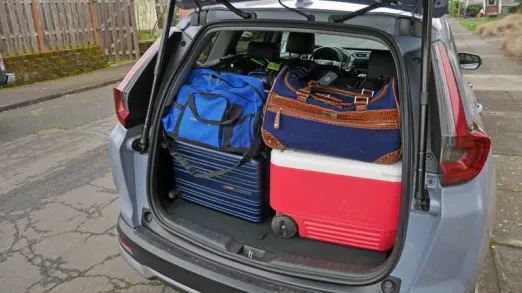
I'm guessing I might've been able to squeeze that blue bag into the Rogue, but the cooler definitely wasn't going. So that's basically the difference: half a 38-quart cooler. For most folks, big deal.
Now, let's dig into a few other points about the Rogue's cargo area.
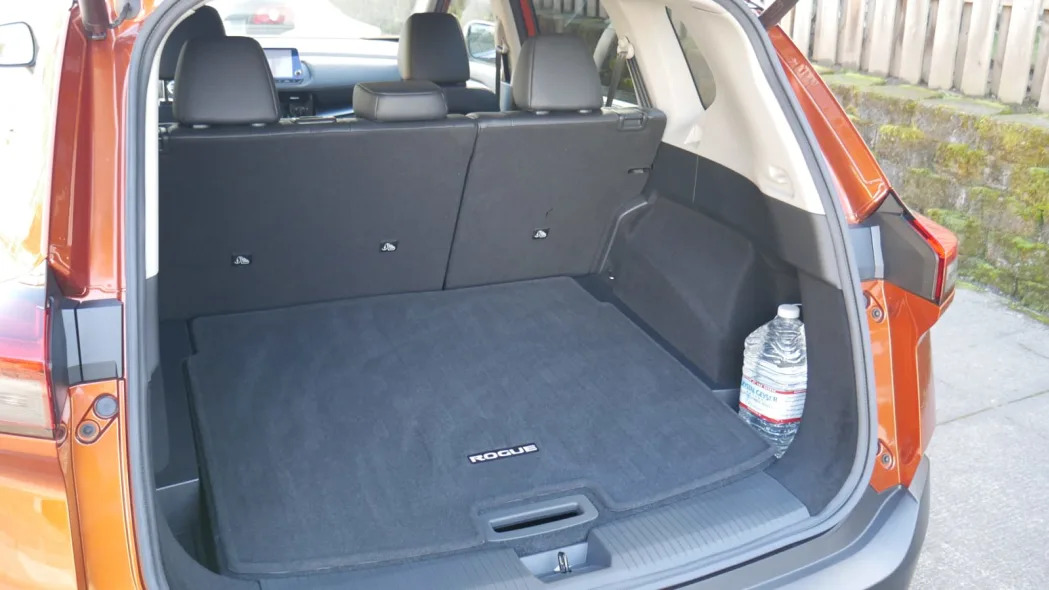
First, that jug of water was put there by Nissan's PR folks to demonstrate that those cargo cubbies have been enlarged to hold something like it in place. Thoughtful touch, both on the part of the PR folks and the people who designed this handy feature. No one likes their groceries smashed by errant jugs and watermelons.
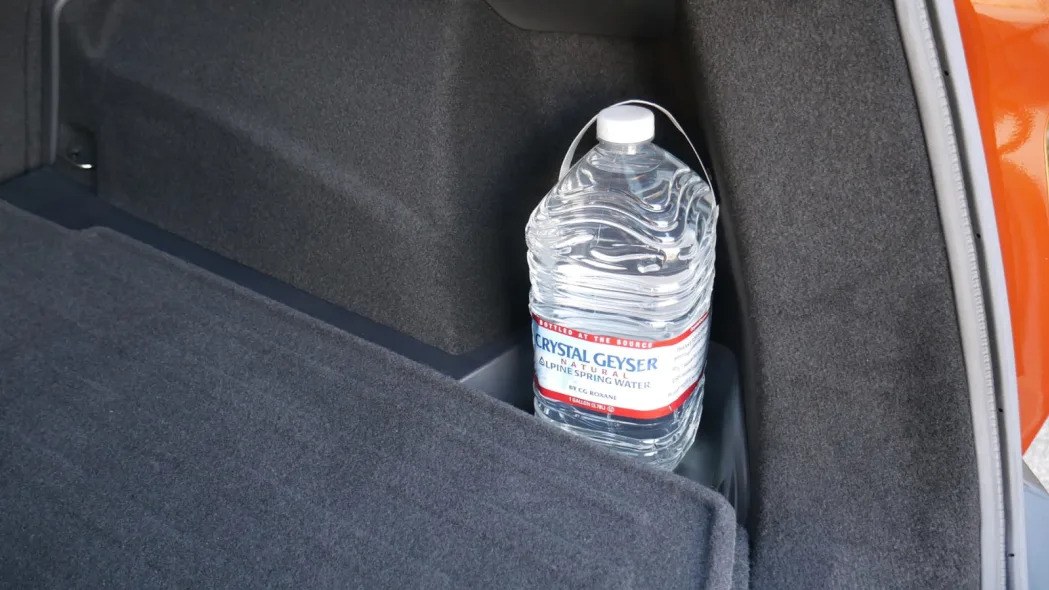
Second, as previously noted, this Rogue SV does not have the Divide-N-Hide cargo system that increases capacity by lowering the floor, and bifurcating it so you can stack the back half at a higher position, thus creating a more versatile space. As this Rogue doesn't have that, the floor is higher and the only thing underneath it is the spare tire.
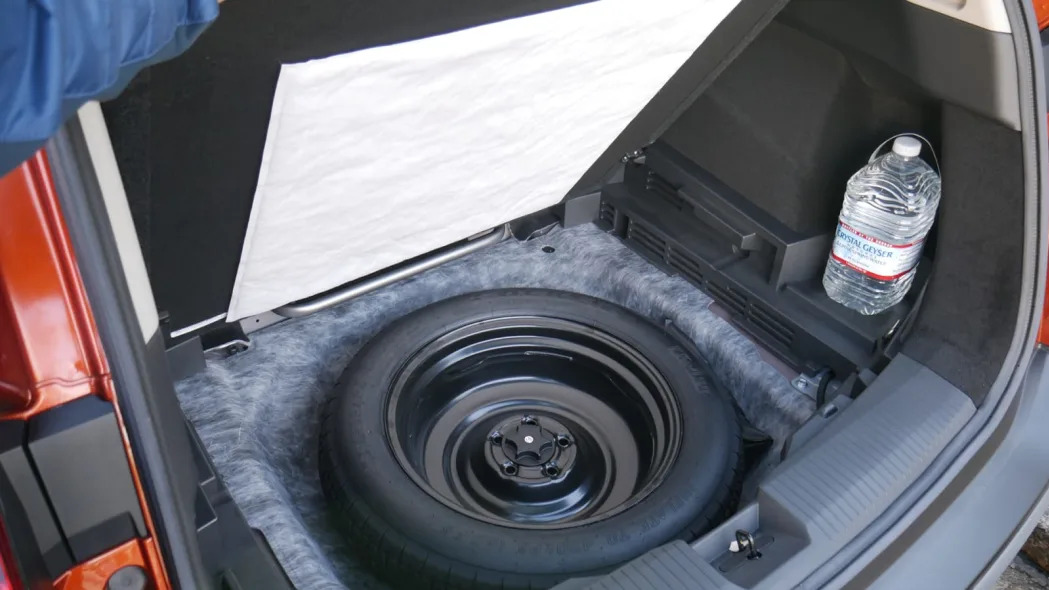
Third, you'll note the above cargo area picture includes an accessory carpet that I removed while testing to ensure maximum volume. However, there seems to be a good reason for it: the "carpet" that covers the floor is covered in a very thin, cheap fur that was scraped up when I merely loaded and unloaded empty suitcases. That's not great.
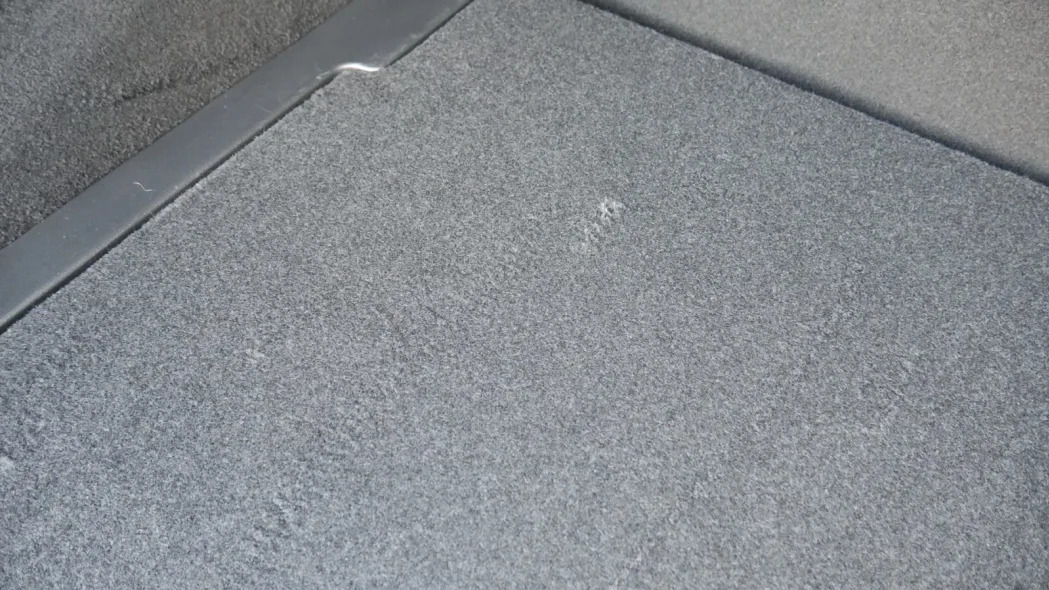
Also not great is the amount of back seat recline in the Rogue. It's so little you'd barely notice, and it certainly didn't make a difference when loading luggage.
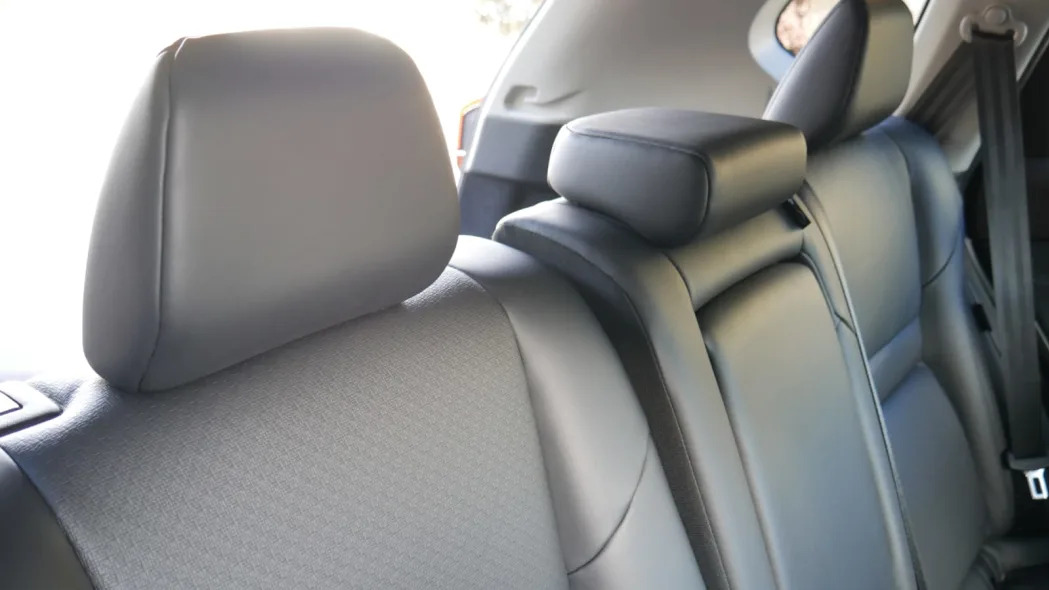
Fifth, here is what the cargo area looks like with a Thule Spring stroller on board. It's one of the smaller strollers, but nevertheless, here's the picture.
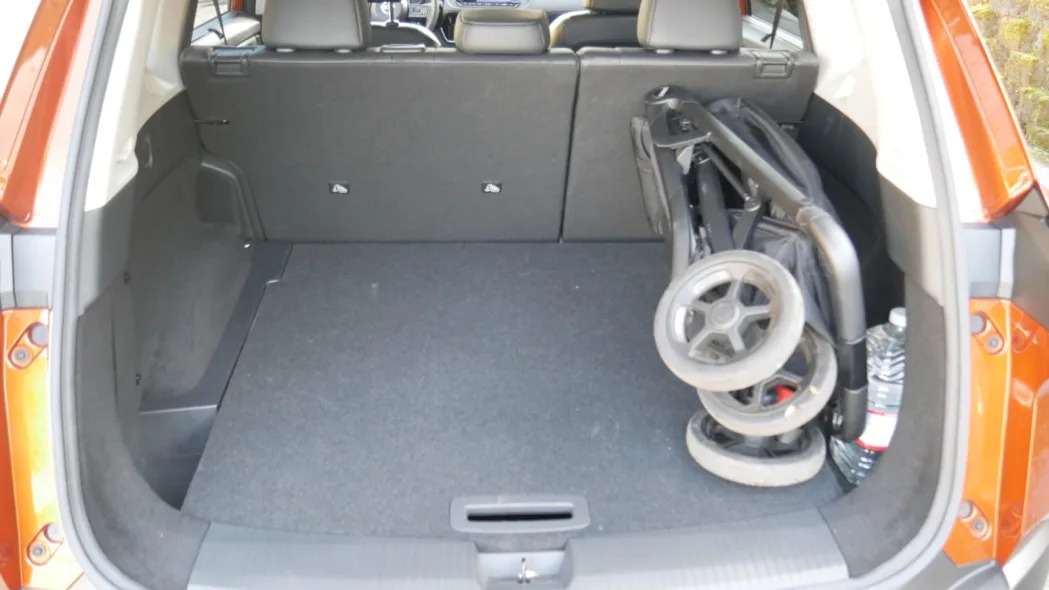
And finally, should you not be able to fit everything inside the Rogue, remember that it has fake roof rails.
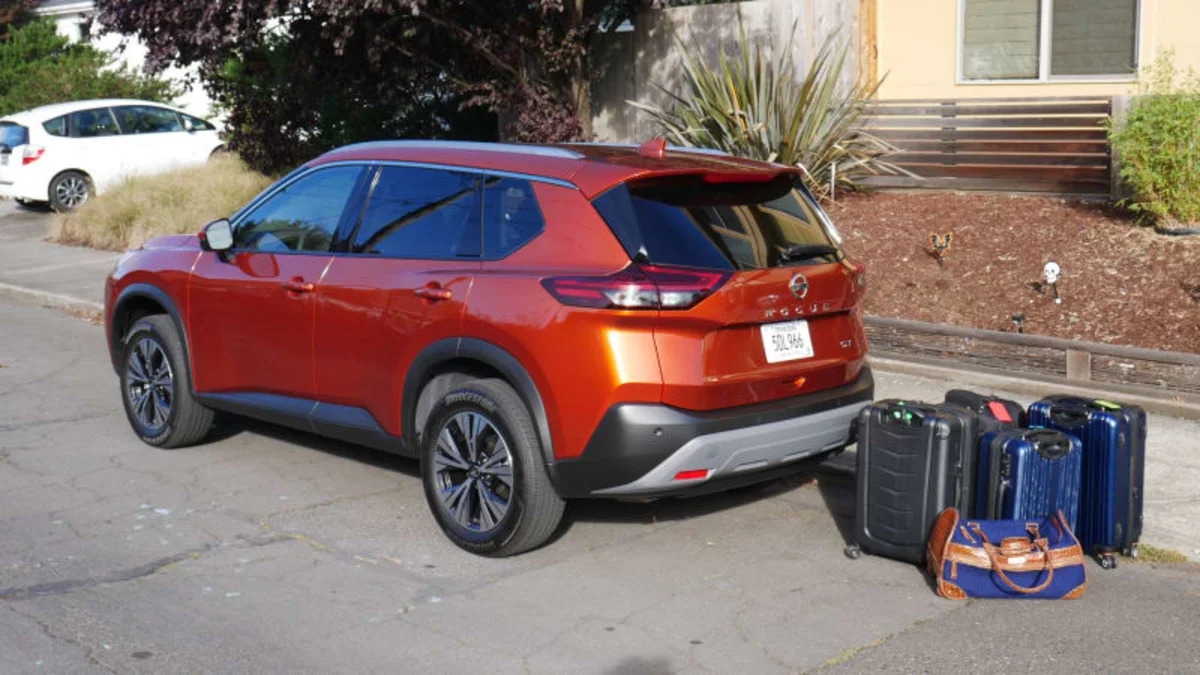

Sign in to post
Please sign in to leave a comment.
Continue